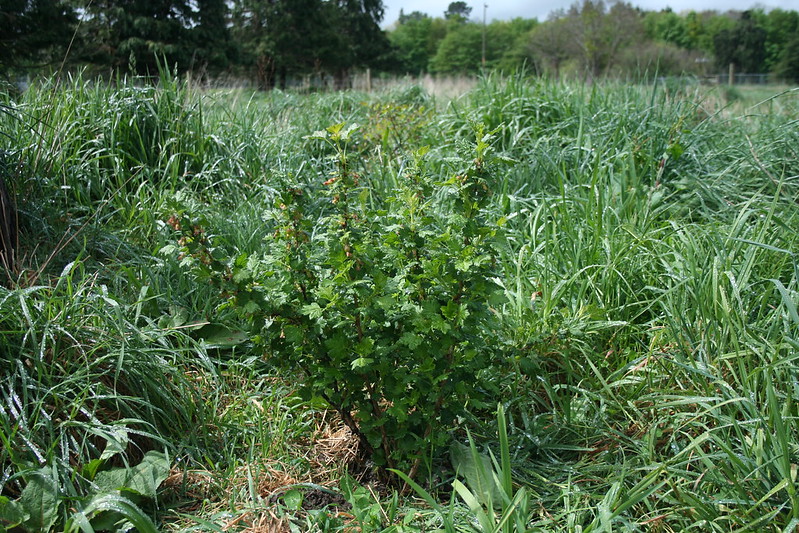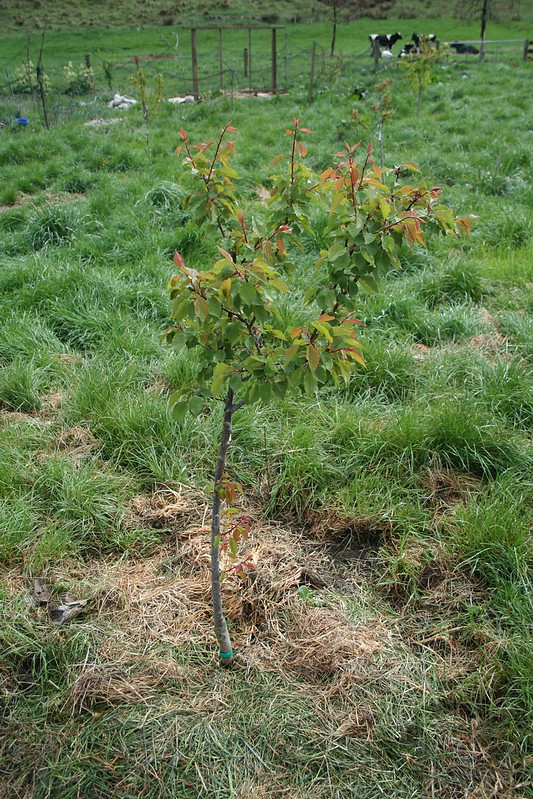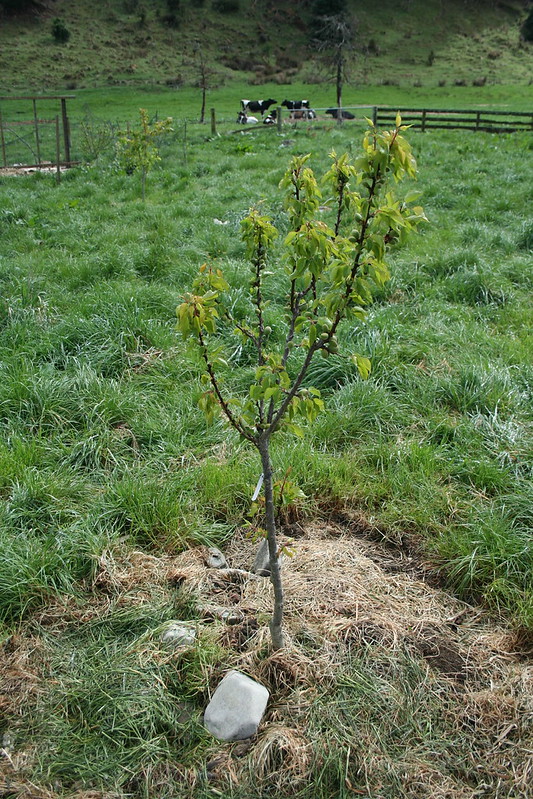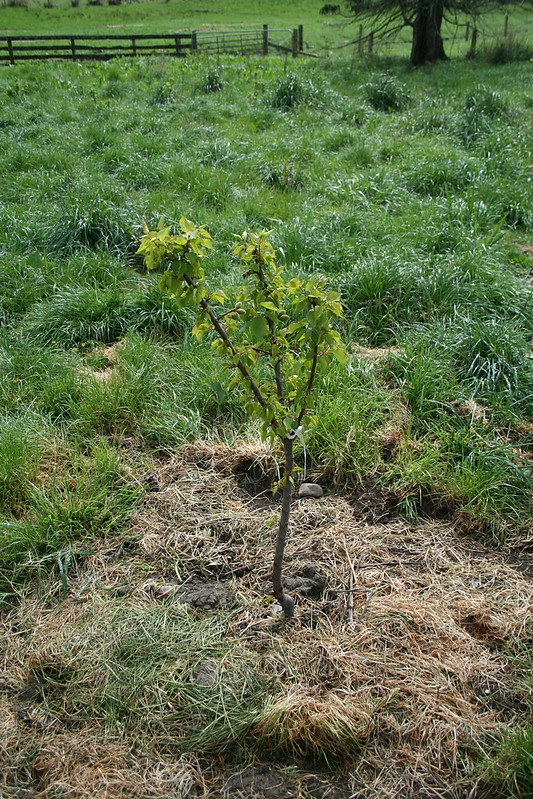Invicta gooseberry in Spring 2015
This is the sole surviving gooseberry as of the start of Spring.
 |
| Gooseberry var. Invicta |
 |
| Gooseberry var. Invicta |
This is the sole surviving gooseberry as of the start of Spring.
 |
| Gooseberry var. Invicta |
 |
| Gooseberry var. Invicta |
Posted by
Richard
at
3:27 pm
0
comments
![]()
Labels: farmlet, fruiting plants, gooseberry, spring
The Californians have many things to answer for, and the worst of their crimes are their thistles. These have root systems underground, you can mow them but they'll grow back. And you can grub/dig out the roots, but every fragment you leave down there will turn into a new root system.
 |
| Flattened californian thistles |
Posted by
Richard
at
3:05 pm
0
comments
![]()
I've planted three apricot trees in the orchard, a Royal Rosa, a Moorpark and a Cluthagold.
The Royal Rosal flowered first, at the same time as the older apricot tree. Unfortunately, while I covered it along with the later flowering trees with frost cloth, a heavy frost occurred on a night when no-one was here to cover it and none of the flowers survived. Last year one apricot ripened on this tree.
 |
| Royal Rosa apricot tree |
 |
| Moorpark apricot tree |
 |
| Cluthagold apricot tree |
Posted by
Richard
at
2:50 pm
0
comments
![]()
Labels: apricots, farmlet, fruit trees, trees